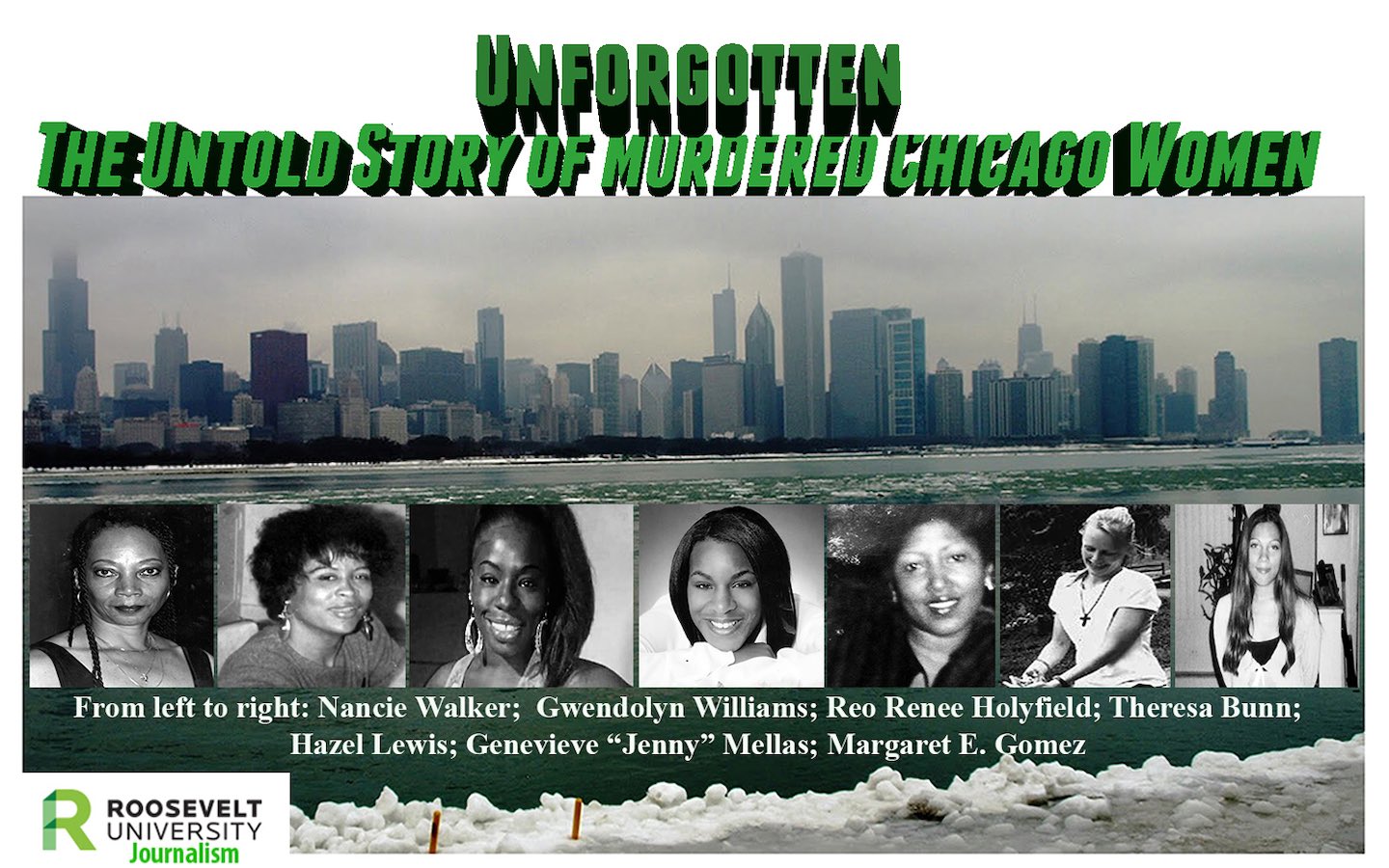
Roosevelt University professor John Fountain and his journalism students reported on the lives of 51 women, mostly Black women, whose murders had gone uncovered by crime reporters and unsolved by Chicago police.
The Murder Accountability Project, a nonprofit research organization, used algorithms to flag 51 strangulation murders between 2001 and 2018 as the work of a possible serial killer. The 15 young journalists interviewed the friends and family of the women, many of whom had never been contacted by detectives.
John Fountain is a former chief crime reporter for the Chicago Tribune and a former correspondent for the New York Times.
.embed-container { position: relative; padding-bottom: 56.25%; height: 0; overflow: hidden; max-width: 100%; } .embed-container iframe, .embed-container object, .embed-container embed { position: absolute; top: 0; left: 0; width: 100%; height: 100%; }“We took to the streets and to the computer using traditional journalistic reporting techniques to find out who these women were, to simply humanize them, to try and put a face to each tragic story,” said Fountain.
The young journalism students sought to tell the full stories of the victims whose bodies were discarded, in many cases, in trash cans in alleys on the West and South Sides. Through digital media, the project also documented the voices and faces of those working for organizations like The Dreamcatcher Foundation in Chicago that seek to end human trafficking.
In podcast episodes, the student journalists included their own stories on their reportorial foray into covering this story, its impact on them and the unique difficulties it presented in the middle of a global pandemic.
“My hope is that what we present here makes some small difference, perhaps inspires or compels the solving of these cases, maybe brings some measure of solace for their loved ones deeply wounded over the deaths of their sisters, mothers, aunts, daughters, and the way in which their lives were stolen, their bodies and their memories desecrated,” Fountain said.
The project was featured in a cover story by WGN News, as well as stories in the Columbia Journalism Review and People magazine.
Read the students’ reporting at unforgotten51.com.
JOURNALISM AND MEDIA STUDIES
The bachelor's in journalism and media studies degree is a mix of hands-on professional courses and theoretical courses. Students in the journalism concentration will complete course work in online, broadcast and print journalism and are thus prepared for work in today's multimedia news environment.
Students in the media studies concentration gain the objective knowledge, tools and skills to analyze, evaluate and create messages using all forms of media technologies to prepare for graduate study as well as for work in the media industries and careers involving mediated communications. Learn more.